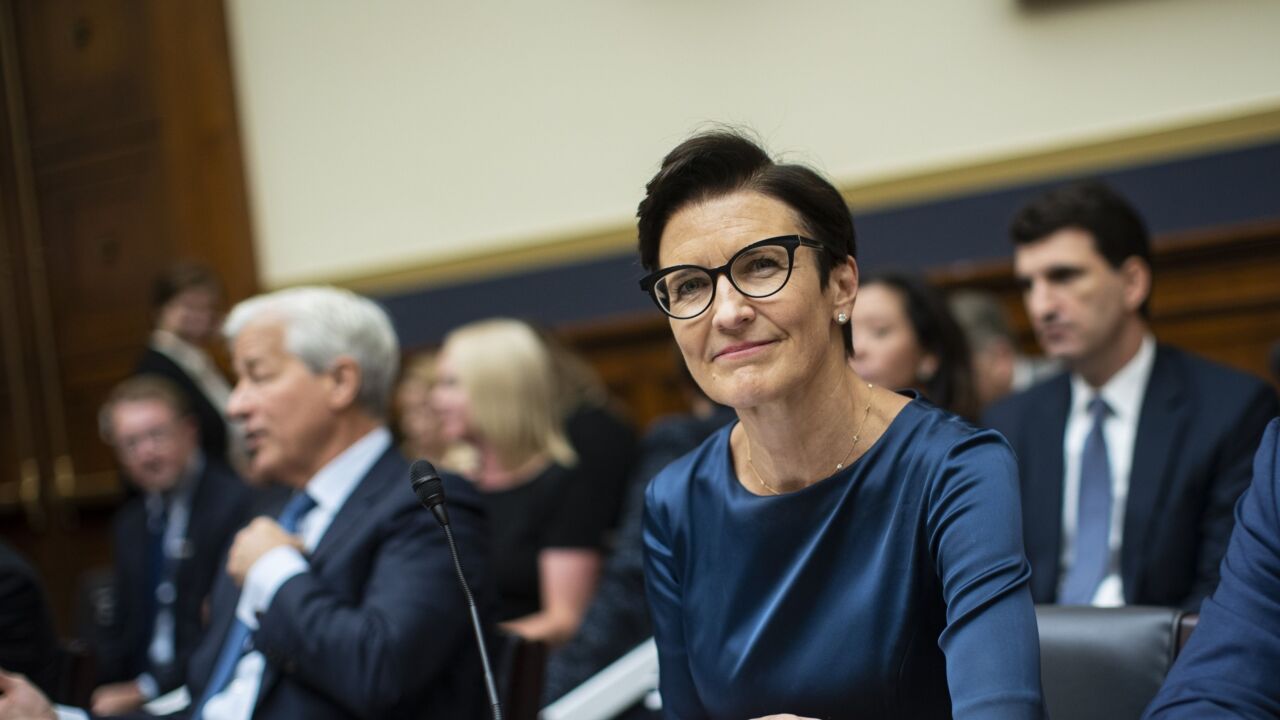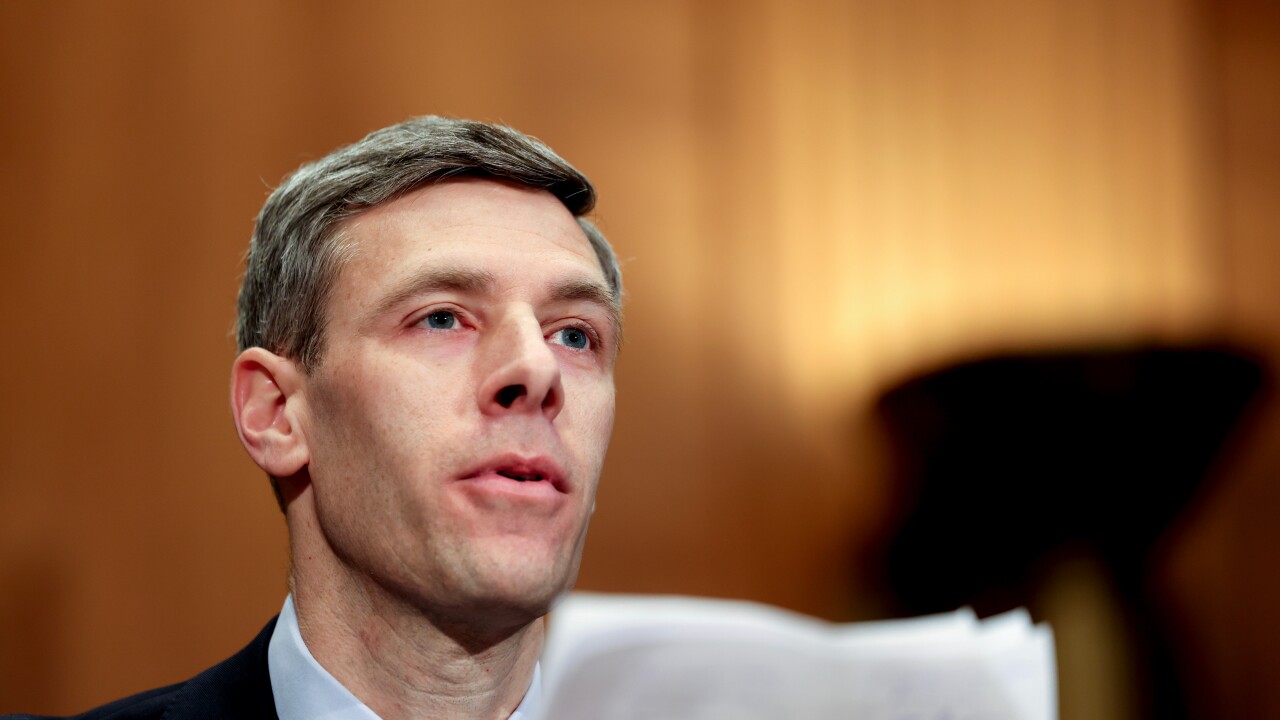With the
They got several tantalizing clues in July when Federal Reserve Vice Chairman of Supervision Randal Quarles delivered a
“This review should ensure that our regulations continue to appropriately increase in stringency as the risk profiles of firms increase, consistent with our previously stated tailoring goals and the new legislation,” Quarles said.

Those rules will hinge on one critical question: How much risk do banks in that range pose to the broader financial system, and how aggressively should the Fed minimize it?
“There is one unanswered question … and that is, is it going to be focused on systemic risk or safety and soundness?” said Wayne Abernathy, executive vice president for financial institutions policy and regulatory affairs at the American Bankers Association. “Anything dealing with systemic risk has to take into account safety and soundness, but safety and soundness does not have to take into account systemic risk for institutions that don’t pose any systemic risk.”
Marcus Stanley, policy director for Americans for Financial Reform, argued that those banks collectively pose a systemic risk even if the failure of a single bank would not crash the global economy on its own. The financial crisis was caused by the chronic undercapitalization of several institutions — big and small — at the same time, he said.
“On some of these regional banks, you don’t have knock-on effects to the same degree, but it’s still a broader systemic risk question for the economy if you have a number of large banks that are undercapitalized,” Stanley said. “The line between macroprudential and prudential is not as clear as people make it out to be.”

While not going into explicit detail, Quarles gave some hints in his speech of how the Fed would regulate regional banks.
The annual submission of living wills to the Fed and Federal Deposit Insurance Corp. seems unlikely to continue for banks with less than $250 billion, as Quarles said that the agencies should “consider limiting the scope of application of resolution planning requirements to only the largest, most complex, and most interconnected banking firms.”
Quarles similarly suggested that risk-based capital requirements and liquidity regulation would remain “a primary component of supervision and regulation of large banks.” But he said that the agency would “at least consider” conducting supervisory stress tests on an “other than annual” basis, and that there “may be opportunities to modify aspects of the standardized liquidity requirements.”
Abernathy said the banking industry was broadly supportive of the Fed’s approach.
“It seems to me that Quarles is operating in a very considered and measured way, as if he wants to make a strong case with whatever the Fed eventually does, which I think is right,” Abernathy said. “What we’re hoping the Fed does — and all the regulators do — is something that’s going to be enduring. The last thing our bankers want is to be whipsawed between one regulatory side and another.”
The Fed has given little indication that it will broadly favor safety and soundness over systemic risk for firms with $100 billion to $250 billion of assets. Both Quarles and Fed Chairman Jerome Powell have
Isaac Boltansky, and analyst for Compass Point Research & Trading, said that the post-election hopes that regulatory relief would be broad and sweeping have effectively been dashed by Quarles’ speech.
“I think that the Quarles speech serves as a reaffirmation that what the regulatory relief bill does is modestly reduce compliance costs for regional banks and could help slightly bolster an M&A tailwind,” Boltansky said. “But it is not a wholesale removal of the regulatory regime for those banks. To me, the biggest takeaway from [S] 2155 from a policy perspective is that it enshrined the Dodd-Frank framework … as law.”
But Stanley isn’t so sure. The Fed’s recent proposals to revise the
“They got a significant cut in the proposal for the supplemental leverage ratio, and they also got a significant capital cut in the stress test proposal,” Stanley said. “So they’ve already got several cuts in capital. But it’s clear that what’s next on their agenda is cutting the G-SIB surcharge. They’re going to bring a lot of pressure on that.”
That pressure seems to have already begun. Last Friday a group of 29 Republican members of the House Financial Services Committee sent a
A Fed spokesman declined to say whether it was considering changes to its G-SIB surcharge rule, saying only that the agency has received the letter and would respond.
But Quarles and the Fed's Powell have sent mixed signals about the surcharge and big-bank capital requirements in recent months. Quarles said in his testimony before the House committee in April that the “original calculation of [the surcharge] was made a number of years ago” and that the logic behind the surcharge was to offset the risk of default, which has been lessened elsewhere through the living-will process.
“It's generally accepted that that has resulted in improvement in resolvability of the firms, and that means that the consequence of their default is less, and the reason for the G-SIB surcharge is precisely our assessment of the heightened consequence of their default,” Quarles said. “I don't know exactly what the size of that effect is, what the outcome of that would be but then a process of thinking about is appropriate now.”
But Powell suggested that capital relief for the largest banks is not on the agency’s agenda, saying during his testimony before the House Financial Services Committee in July that he was “not really seeing that case is made at this point” that any such relief is warranted.
The Fed has been consistent, meanwhile, in its approach toward regional banks. The agency has emphasized “tailoring” its rules well before the Trump administration took the reins, and with the passage of S 2155, it now has to determine how narrowly to tailor its rules for those regional banks.
The universe of banks within that $100 billion-$250 billion band is relatively small — a little over a dozen institutions — and the recently passed law emphasizes that the Fed can apply enhanced prudential standards by rule or “by order.” This suggests the Fed could opt to develop bank-by-bank standards rather than establish buckets or thresholds for banks to fit into.
One industry source who was not authorized to speak on the record said he thought it unlikely that the Fed would go this route, if for no other reason than because any resulting rules would appear arbitrary. But thresholds that are too narrowly defined face the same problem, the source said.
“I have to imagine that those are probably exactly the questions and trade-offs that the Fed has in mind,” the source said. “The most tailored regulation in the world would be bespoke, firm-by-firm rules, but that just doesn’t work. You have to supplement that with … something that’s mathematical.”
Stanley said the regulatory relief law didn’t give the Fed any more discretion to tailor its capital rules than it had before — or even before the passage of Dodd-Frank. What matters is that the Fed uses its discretion to identify sources of systemic risk and take steps to prevent those risks from harming the financial system.
“Post-[S] 2155, they have a lot of discretion now, but they had discretion before the financial crisis,” Stanley said. “They had all the powers they needed, but they didn’t use them. So the question is, now that we’ve put the ball back in their court, are they going to be more conscientious this time?”





